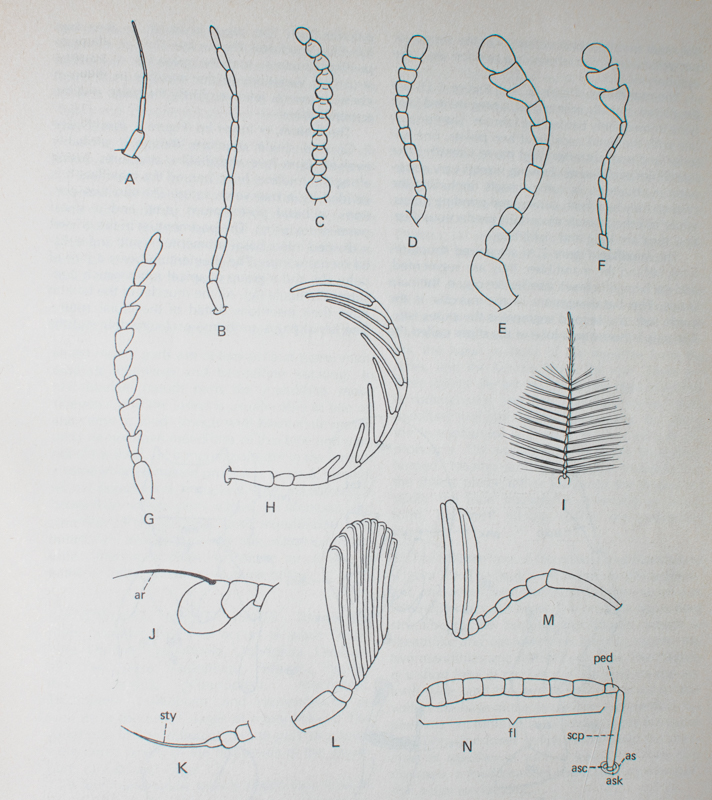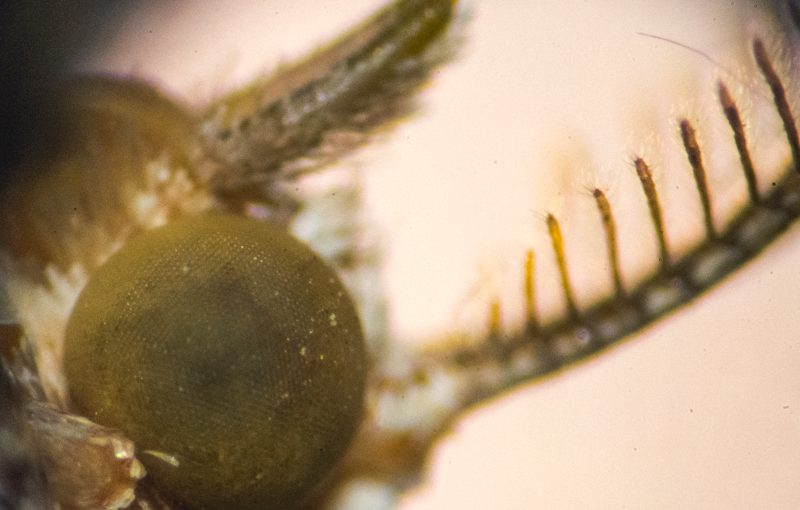
Antennae are used to feel, smell, and often hear. They’re also quite variable in appearance, making them an excellent identification tool. The types are listed below with the letter corresponding to the key listed at the end.
Setaceous: Bristlelike, with the segments becoming thinner distally (towards the top). E.g.: Dragonflies. Fig A.
Filiform: Threadlike, with segments uniform in size. Typically cylindrical. E.g.: Ground beetle. Fig B.
Moniliform: Similar to a string of beads, with segments having similar size and typically spherical. E.g.: Wrinkled bark beetle. Fig C.
Serrate: Sawlike. Segments are more are less triangular, especially in the top 1/2 – 1/3. E.g.: Click beetle. Fig G.
Pectinate: Comblike. Most segments posses long, slender lateral processes. E.g.: Fire colored beetle. Fig H.
Clubbed: There are four types of clubbed antennae. The segments increase in diameter distally. Clavate indicates a gradual increase, a such as Fig D or F. Captitate indicates that they suddenly enlarge, such as Fig F. Lamellate posses expanded, laterally forming ovular plate-like lobes, such as Fig M. Finally, flabellate refers to lobes that extend laterally, such as Fig L.
Geniculate: Elbowed, where the first segment is long and the following segments are smaller, and at an angle. E.g.: Stag beetle. Fig N
Plomose: Feathery. Most segments have whorls of long hair attached. E.g.: male mosquitos. Fig I.
Aristate: The final segment is typically enlarged, and has a conspicuous dorsal bristle known as the arista. E.g.: Syrphid fly. Fig J.
Stylate: The last segment has an elongate terminal sty-like or finger-like process, known as the style. E.g. Robber fly. Fig K.
